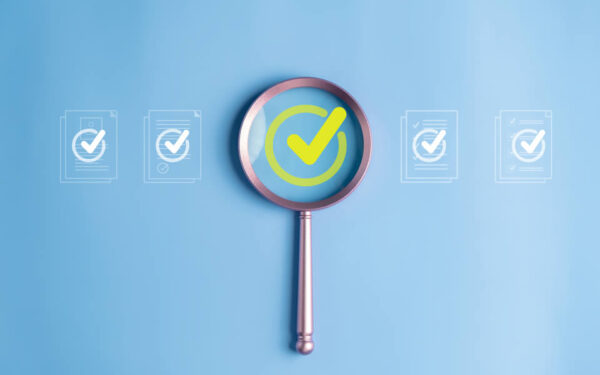FASB Lease Accounting Standards Update: What to Expect

As part of an overall effort to increase transparency and comparability between organizations, FASB issued Accounting Standards Update (ASU) No. 2016-02, Leases (Topic 842), on February 25, 2016. This guidance supersedes FASB ASC 840, Leases, and requires recognition of leased assets and liabilities, representing the rights and obligations created by leases with terms of more than 12 months, on the balance sheet as well as enhanced disclosure over the amount, timing and uncertainty of cash flows arising from leases. This ASU is effective for fiscal years beginning after December 15, 2018, for public business entities, specific not-for-profit entities and specific employee benefit plans, while the effective date for all other entities is for fiscal years beginning after December 15, 2019. Early application is permitted for all organizations.
Lease accounting has always been a complex area and under this new ASU, it has undergone some significant changes. Lessor accounting has remained fairly similar to current generally accepted accounting principles (GAAP) but includes particular changes to bring lessor accounting into line with the new lessee accounting model. Lessors must evaluate if a lease transfers all the risk and rewards incidental to ownership of the underlying asset to determine if the lease is financing or a sale. For sales-type leases, a selling profit will be recognized at the commencement of the lease to keep in line with the new revenue recognition standard (ASC Topic 606).
Leasing is one of the most common business practices and is employed by many entities over various industries. Due to the regularity of leasing, it is important that the users of financial statements are provided with comprehensive and understandable information related to an entities’ leasing activities. One of the most common criticisms of current lease accounting standards relates in particular to the fact that operating leases are not required to be recognized on the balance sheet. The new ASU responds to that criticism by changing that practice and now requiring leased assets and liabilities to be reported on the balance sheet.
The primary reasoning for the new guidance is that a lease, as defined by the ASU, is a contract, or part of a contract, which conveys the right to control the use of identified property, plant, or equipment for a period of time in exchange for consideration. This right of control in exchange for consideration is what drives the reasoning behind recording an asset and liability on the balance sheet of the lessee.
The ASU applies to both capital (or finance) leases and operating leases. Under current GAAP, capital leases require that an organization recognize amortization of the right-of-use asset separately from interest on the lease liability, which is recorded on the lessee’s balance sheet. Currently, operating leases are not recorded on the balance sheet and represent what for most organizations is their largest source of off-balance-sheet financing. The new ASU requires lessees to recognize a right-of-use asset and a lease liability for both types of leases. The income statement treatment between capital and operating leases is different. Capital leases recognize amortization of the right-of-use asset separately from interest on the lease liability while operating leases recognize a single total lease expense.
The new ASU also affects the statement of cash flows.. Cash receipts from leases on the books of a lessor should be recorded within operating activities. On the books of lessees’ cash payments for the principal portion of the lease, liability should be recorded within financing activities while cash payments arising from the interest portion of the lease liability or operating leases should be recorded within operating activities.
This new guidance will have a significant impact on the statement of financial position for most nonprofit organizations, as lessees must now report obligations for operating leases. Current practice for most nonprofits, in the first year of the lease, is to create an Excel spreadsheet that calculates the straight-line expense on a monthly basis for the term of the lease. This spreadsheet is then used to record monthly rent expense without any changes to the spreadsheet or even much thought as the years go on. This has become a routine practice that will now require more frequent reassessments and add a new level of complexity to lease accounting. Organizations should start analyzing the data they possess related to their leasing arrangements now to ensure that they have all information necessary to meet reporting requirements under the new rules.
Keeping in mind that the current trend in the accounting world is transparency, below are some considerations your organization will need to address to develop a plan for compliance with the new standard. Don’t wait until it’s time to implement, as there are many considerations to prepare for other than just the accounting changes.
How will the new standards affect my organization’s contractual agreements or loan covenants?
One of the more significant areas to consider is the addition of new debt to the statement of financial position and how this will affect legal agreements that are tied to debt covenants. Having early conversations with the board of directors, grantors and lenders about the impact the new standard will have on the statement of financial position and debt reporting will be key, particularly if your organization is renegotiating or planning to enter into new credit agreements.
How many leases does my organization have and where are they located?
Many organizations have dire systems for tracking, monitoring and storing lease agreements. Supporting documentation on an organization’s leases may be located in different types of files, or saved on different hard drives, servers or even in filing cabinets. If your organization has multiple offices, leasing information may be spread across various business segments or geographical locations. As a first step in evaluating the impact, the new ASU will have on your organization, determine the number of lease arrangements you have and obtain the supporting leases and any amendments.
Should my organization enter into a lease or purchase real estate or equipment?
The impact of the changes the new ASU will have on your organization’s statement of financial position and statement of activities may cause different decisions to be made about whether to lease or purchase. Your organization’s ability to identify cost savings will affect these decisions. This is a good time to overhaul your organization’s lease procurement process in an effort to identify ways to generate cost savings. Integrating your organization’s data on leases will enhance your ability to perform data analytics and identify cost synergies through consolidation of vendors or the ability to make timely decisions before the end of a lease term.


















